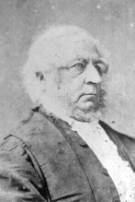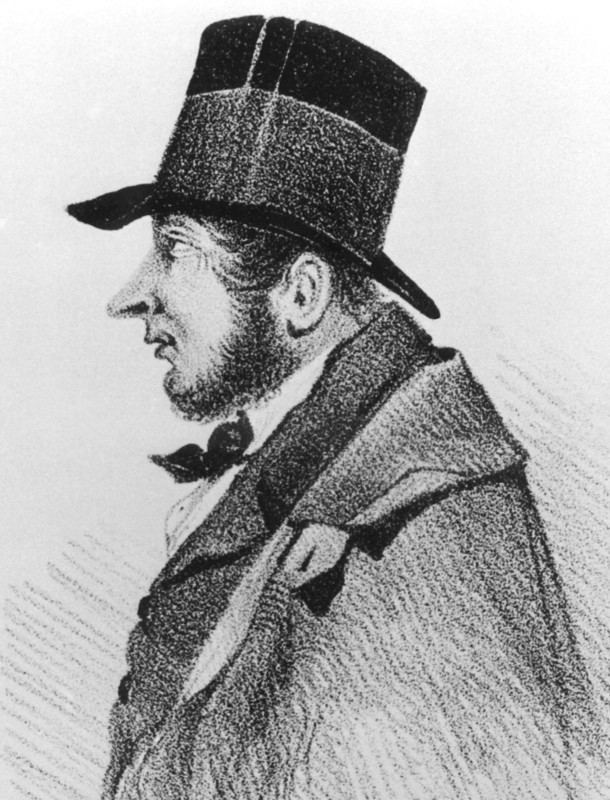Name George Kingston | Died November 26, 1880 | |
 | ||
Richard McCarthy - George Kingston
Sir George Strickland Kingston (23 August 1807 – 26 November 1880) arrived in South Australia on the Cygnet in 1836. He was the Deputy Surveyor to William Light, engaged to survey the new colony of South Australia. Kingston was also the first Speaker of the South Australian House of Assembly.
Contents
- Richard McCarthy George Kingston
- Early life
- Deputy Surveyor South Australia Colony
- Later career
- Other Interests
- Personal life
- Memorials
- List of buildings attributed to Sir George Strickland Kingston
- References

Early life
Kingston was born in Bandon, County Cork, Ireland, one of five children of George Kingston and Hester Holland. Strickland's father owned a lumberyard, a tenement (Kingston Buildings), and was credited with being involved in the three canal plans for Bandon. Strickland emigrated to England and was employed in Birmingham in 1832. He subsequently took an active part in promoting the South Australian Act in 1834 and helped to lobby successfully for its passage through the House of Commons.
Deputy Surveyor, South Australia Colony
Kingston was appointed deputy surveyor to the new province and sailed with most of the surveying party in the Cygnet in March 1836. Because he detoured to Rio de Janeiro for supplies the Cygnet did not arrive at Nepean Bay until 11 September 1836, nearly a month after Colonel William Light, who was therefore left short-handed at a critical time. However it was Donna, the thirsty South American bloodhound, who led Kingston, John Morphett and Lieutenant W.G. Field to the River Torrens. Kingston was incompetent as a Surveyor and his work on the Survey of Adelaide, between West Terrace and the Western side of King William Street was so erreneous that Light had all of Kingston's area re-surveyed by Assistant Surveyors Boyle Travers Finniss and George Ormsby.
Kingston's ability as a surveyor was frequently questioned and it was he who was spared to return to England in August 1837 to seek removal of Governor Hindmarsh. The colonisation commissioners sent him back next June with orders unpalatable to Light, who resigned with all but three of his staff. Kingston made many more blunders in continuing the country surveys (errors that Frome later reported requiring substantial resources to correct), and soon after Governor George Gawler's arrival in October 1838, Kingston resigned.
Later career
Kingston established himself as a civil engineer, architect and surveyor, and in 1840 the Adelaide Municipal Council briefly engaged him as town surveyor. He was later engaged as inspector of public works and, buildings. Among his works still standing are the south-eastern corner of Government House (1839), the original section of the Adelaide Gaol (1840), Cummins House at Camden Park (1841) and Kingston Historical House (1840, 1851). He also designed the first monument to Colonel Light in Light Square (1843). He designed White's Rooms, Adelaide's first public entertainment venue.
On 10 July 1851, Kingston was sworn in as a member of South Australia's first elected parliament and held his seat in the Legislative Council until 2 February 1857. On 9 March 1857, Kingston was elected to the newly established House of Assembly and became the first Speaker on 22 April 1857. Kingston held this position until 22 March 1860 and again from 31 March 1865 until his death on 26 November 1880. Kingston represented The Burra and Clare from 9 March 1857 to 22 March 1860 and Stanley from 6 May 1861 until his death.
Kingston was prominent in forming the South Australian Mining Association to keep the mineral wealth of the colony from overseas speculators. With Edward Stephens, he investigated copper finds at Burra in 1845, and then played a leading role in the 'snobs' party to defeat the 'nobs' for the mine. An original shareholder, he was appointed surveyor and architect of the mining association but it was William Jacob who carried out the Burra special survey of 20,000 acres (8094 ha). In April 1848 he was elected a director, deputy-chairman in October 1856 and chairman from 1857 until his death. In its first five years the 'monster mine' paid fifteen dividends each of 200 per cent.
In 1858 Kingston was part of the team who surveyed the namesake town of Kingston, later renamed Kingston SE as a part of a private real estate development.
Other Interests
Kingston was interested in the Volunteer movement and was once captain of the East Adelaide Rifles. He was also a founding member and later Master of The South Australian Lodge of Friendship and of the Statistical Society, keeping a valuable register of Adelaide's rainfall from 1839–1879. Kingston was also one of the founding members of the Freemasons South Australian Lodge of Friendship No. 613 (under a Warrant or Charter of Constitution which was issued at Adelphi, London, England on 22 October 1834). The original Lodge to which Kingston belonged was Irish Lodge No 81. Kingston was the first Senior Warden of the new South Australian Lodge and on 14 August 1838, Kingston was elected Master. He was a member of the Agricultural and Horticultural Society and its president from 1859 to 1860.
Kingston was knighted in 1870. He died in 1880 aboard the RMS Malwa on his way to India and was buried at sea.
Personal life
Kingston married three times, being widowed in his first two marriages. He married his first wife Henrietta Ann McDonough in 1829; she died ten years later and their only child died soon after childbirth. Six children were born to his second wife, Ludovina Catherina da Silva Cameron (daughter of soldier Charles Cameron (1779–1827)), after their marriage on 10 April 1841. She died ten years later and Kingston married widow Emma Lipson (1816–1876), daughter of Thomas Lipson R.N., South Australia's first harbourmaster, on 4 December 1856 (no children resulted from this marriage).
Memorials
Kingston's name has been applied to the following places in South Australia - Hundred of Kingston, Mount Kingston near Lake Eyre, Kingston Park (a suburb of Adelaide) and the township of Kingston SE. The township of Kingston-on-Murray was named after his son, Sir Charles Cameron Kingston.
